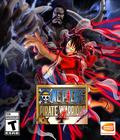
Genre: Puzzle
Publisher: Eidos Interactive
Developer: Gamesauce
Release Date: October 16, 2007
 I'm new to the whole handheld gaming device world, having just only picked up a DS Lite on the cheap. Of course, I'm completely hooked on the thing, much more so than I was with the PSP. One thing that has become quite clear to me is how beautifully casual games, which are currently earning obscene cash for the PC market, fit in with the touch-sensitive input scheme of the DS. The subject of today's write-up is a perfect example of this; Prism: Light the Way is a quirky little puzzle title currently being adapted to the DS platform by Gamesauce in the UK. Will their treatment of Morpheme Game Studios' brain teaser live up to its previous iterations? I think it just might.
I'm new to the whole handheld gaming device world, having just only picked up a DS Lite on the cheap. Of course, I'm completely hooked on the thing, much more so than I was with the PSP. One thing that has become quite clear to me is how beautifully casual games, which are currently earning obscene cash for the PC market, fit in with the touch-sensitive input scheme of the DS. The subject of today's write-up is a perfect example of this; Prism: Light the Way is a quirky little puzzle title currently being adapted to the DS platform by Gamesauce in the UK. Will their treatment of Morpheme Game Studios' brain teaser live up to its previous iterations? I think it just might.
It's not often that one of these puzzle titles actually goes so far as to cook up a storyline to explain why you're solving the riddle. Usually, you're just going through the motions for the sake of, well, going through the motions. In the case of Light the Way, however, Morpheme has been considerate enough to provide us with the luxury of a tale, although it might seem somewhat on the esoteric side for the average end user.
The action takes place within a black hole, you see. This particular gravitational anomaly is called Oog, and it houses a race known as the Glowbos. What makes this little civilization so interesting, aside from the fact that living in a black hole is for all intents and purposes impossible, is that they feed on light. One presumes they are a slender race; from what I gather, there isn't a whole lot of that sort of thing in a place like that. Anyway, eat it they do, and all is well until a light-consuming monster called a Bhobail shows up and starts stealing all of the Glowbo vittles. Enter into the equation our heroes, the benevolent Bulboids, another intergalactic species that seemingly exists for no other reason than to emit beams of light. Your task, as the player, is to manipulate these beams into the waiting mouths of starving Glowbos, thereby saving them from the predations of Bhobail.
Confused yet? Me, too. All that you really need to remember are that Glowbos need light, Bulboids emit light and you need to make sure the two meet up. It's simple enough when you break it down this way.
Play itself is devilishly simple but very difficult to describe. You are presented with a grid. In various places around the edges of the grid are Glowbos, wasting away in the darkness. On the grid will be the Bulboid, streaming a straight beam of light. In the simplest possible map, all you need to do is take your stylus, touch the Bulboid and drag it to where its beam of light will connect with the Glowbo. That's all there is to it. What makes it so difficult in the long run are the obstacles placed on the grid, and the various places that the Glowbos appear. Manipulation of the light beam becomes the name of the game.
There are many other objects that factor into how the puzzles can be solved. The first, and probably most important of these, are mirrors, which reflect Bulboid light beams in a fixed direction; there are often several of them lying around the cosmos. Next are the splitters, artifacts that take a light beam and split it into two directions. Next up we have filter blocks. Many different Glowbos feed only on specific colors of light, and Bulboids only ever emit white light. Filters are therefore necessary to make sure the shades are correct for the finicky eaters. Then there are the Cycloids, a different species from Bulboids and Glowbos altogether. (So much for nothing surviving in a black hole ... apparently these places are just teeming with life!) Cycloids act somewhat like filter blocks, except that they cycle Bulboid light beams through a full spectrum of colors and always re-project the shifting light in the direction they are facing (filter blocks don't project light at all, they just color what's put into them). Finally, there are prisms, glass blocks that split white Bulboid light into three colors: blue, yellow and red. Thus, any Bulboid light shaft intersected by a prism will become a four-way split of white, yellow, blue and red.
Though it might not seem like it to read, my description of these objects and their function within the game itself is accurate. However, one really does need to see them all in action to properly understand the interplay of each element.
So you have this Gordian knot of lights, filters, prisms and strange space-faring creatures. If this tickles your fancy, then there's good news! Prism: Light the Way comes with a ton of playtime. The single-player options alone consist of the following: Puzzle mode, Time mode, Hyper mode and Infinite mode. Puzzle mode is set up in tiers, with each tier consisting of eight puzzles. There are 15 tiers, so that's a total of 120 preset challenges to conquer, and this isn't even the option with the most to do. Time mode is similar to puzzle mode, except that you're trying to figure out the solution as quickly as possible. In Hyper mode, Glowbos keep appearing at random on the edge of the screen, and you need to save them before they waste away. You're not racing to beat the clock here — just trying to rescue the little fluffballs before they expire. Finally, Infinite mode generates a random series of puzzles and as its name suggests, I don't think it ever actually ends. On top of these options, there's multiplayer as well. I didn't get to experiment with this, but it's worth mentioning that there will be options to duke it out with friends via the Nintendo Download and Play feature.
Prism: Light the Way has been out for a little while for PC and for mobile handhelds, and its progression to a DS title seems natural. My only true concern is how broad its appeal will be, considering the fairly esoteric nature of its story. However, just because it doesn't make much sense to me doesn't mean it won't please many, many people. I think that if you're a fan of casual, addictive brainteaser games, but you don't want to feel like you're in school (Brain Age, anyone?), then Prism: Light the Way might be right up your alley.













